Platform Approach Speeds Process Development
A modular cell-culture platform demonstrates accelerated process development.
KTSDESIGN/SCIENCE PHOTO LIBRARY/Getty Images
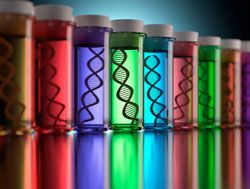
Commercial production of complex biopharmaceuticals such as recombinant monoclonal antibodies is dependent on high performing bioprocesses using mammalian host cells. Chinese hamster ovary (CHO)-based cell culture platforms should combine state-of the-art technologies for genetic vectors, host cell portfolio, cell line generation, cultivation media, and process design to increase the productivity and overall product yields in a biopharmaceutical process for the production of recombinant proteins.
At Boehringer Ingelheim (BI), advances have enabled higher performance benchmarks in time and resources for process development with stringent product quality requirements. An expression platform has demonstrated fast-track development of high-quality, high-titer processes for producing biopharmaceuticals from CHO cells. The platform includes vector design, cell line engineering, high-throughput screening by automation, systematic design of experiment (DoE)-based approaches for media and cell-culture process development to identify optimal process parameters for highly productive processes, and strategies for scale up to clinical and commercial scales.
CLICK FIGURE TO ENLARGE Figure 1: Cell-culture process development concept for Phase I supply including media screening and optimization as well as bioreactor screening optimization modules. For the time scale, one box corresponds to one month. IMPD is Investigational Medicinal Product Dossier.

Depending on the development goals, different development modules can be selected to best fit the anticipated product quality profiles, safety, process robustness, and scalability. A custom set of modules for cell-culture process development modules can be applied to fit internal or external customer requirements (Figure 1). The platform allows for the production of biopharmaceuticals for toxicological studies within approximately 14 months after receipt of DNA sequences. After an additional six months, material from GMP facilities can be provided for clinical studies resulting in a time requirement of 20 months from DNA to Investigational Medicinal Product Dossier. This approach was recently successfully demonstrated at BI.
Cell-line engineering
Cell-culture process development begins with the applied vector system and the use of genetic elements such as promoter designs, terminators, selection markers, and transcription enhancing elements. Depending on the project objectives, product gene optimization is performed to improve expression rates and modulate particular product quality attributes or product properties.
Currently, the majority of all recombinant biopharmaceuticals are produced in mammalian cells. The most preferred host cell line is the CHO cell, but other cell types such as the murine myeloma cells (NS0 and Sp2/0) are also still used, mainly for marketed products. For manufacturing of biopharmaceuticals, the generation of stable transfected production cells is the standard procedure due to higher batch-to-batch consistency and yields. Stable cell lines are typically generated within five to seven months using highly automated standard working procedures. Thousands of clones per project are analyzed using a robotic platform including cell sorting, automated single-cell deposition, and high-throughput analytics for product quantity and quality. The highest producer clones are assessed for growth, robustness, and productivity in representative screening models (e.g., small-scale bioreactors) predictive for the performance in fed-batch processes in large scale. Analysis of cell line stability and product quality is included to select the best-producing high-quality production clone.
The commonly used host cells for cell line generation are the FDA-accepted CHO DG44 and CHO K1 cell lines, including the selection of systems for stable expression of recombinant genes dihydrofolate reductase (DHFR) or glutamine synthetase (GS). The DHFR system allows for highly efficient amplification by addition of increasing amounts of methotrexate. The GS-system, in contrast, enables the cultivation on cells without additional selective pressure in media and enables reduced cell-line development (CLD) timelines. All steps during CLD, including transfection, selection, and cultivation in suspension, are currently carried out in chemically defined serum-free media. Multiple CHO host cell lines with different glycosylation properties are available to help provide best possible match to a desired product profile and anticipated expression levels. New CHO DG44 and CHO K1 host cell lines evaluated at BI and currently implemented into the development platform are showing potential for up to 11 g/L of final product concentrations for platform fed-batch processes.
Cell-culture process development
Development of an efficient, robust, and reproducible cell-culture process is key for successful market supply of a biologic drug. Depending on project requirements, standardized modular work packages allow for a flexible cell-culture process development that meets anticipated goals in safety, product quality, quantity, scalability, and process robustness. These packages aim to improve cell growth, product formation, productivity, and customize product quality by systematically optimizing process and media factors.
For the production of new biologic entities, two opposing development strategies can be distinguished: the risky, but resource- and timeline-efficient “minimum front-loading approach” and a comprehensive development according to the “do it right the first time” paradigm. The assessment of platform fit and scalability is the minimum requirement for an early-stage process development for Phase I supply. Minimal early development effort, however, may induce increased challenges in late-stage process development that may result in unnecessary costs and delays.
CLICK FIGURE TO ENLARGE Figure 2: Product concentrations before (dotted line, initial 80-L scale fed-batch cultivation) and after (solid line, average and standard deviation of two 80-L scale fed-batch cultivation) process optimization for a project (A) and relative increase of product concentrations after cell-culture process optimization for 31 customer and internal projects (B). Data derived from representative 80-L and 200-L scale fed-batch processes demonstrated an average increase in final product concentrations by 70% (solid line).
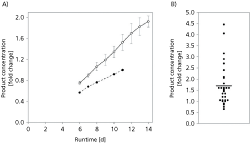
For comprehensive process development, initial work packages are media screening and optimization, which are typically performed in automated high-throughput, small-scale cultivation systems. The impact of different media and specific compounds on the particular cell line are evaluated in the first step. Next, a variable number of cultivation parameter screening and optimization studies are performed in controlled bench-scale bioreactors including DoE approaches. Process fixation and process consolidation runs for scalability assessment and material supply for toxicological studies are typically performed as the last modules in process development. Results for more than 30 internal and customer projects demonstrate that a modular cell-culture process development platform can increase final product concentrations by up to 4.5-fold (Figure 2) while maintaining an anticipated product quality profile. Final product concentrations of up to 7 g/L could be generated within platform 14-day fed-batch processes.
Scale-up, scale-down, and process transfer
The transfer of biopharmaceutical production processes to clinical and commercial scales is challenging. The developmental work leading to an optimized process is largely performed in small-scale systems. Recently, miniaturized disposable small-scale bioreactor systems such as the ambr15 and ambr250 (Sartorius Stedim Biotech) became integral parts of fast-track process development strategies as enabling technologies for high-throughput screening experiments. Furthermore, an increasing number of disposable culture systems were integrated throughout the process.
In addition to disposable shake flasks and wave bioreactors that became standard tools in the past decade, disposable stirred-tank bioreactors up to 2000-L scale have been integrated into cell-culture process platforms recently. In stainless-steel facilities, cost-intensive installations for cleaning and steaming in place are required to enable changeover activities. In a disposable process chain, changeover activities are reduced, which lowers the risks for bioburden and eliminates the risk for carry-over of residual product. The faster changeover is beneficial for multi-product facilities supporting a number of different molecules.
CLICK FIGURE TO ENLARGE Figure 3: Normalized product concentrations (A) and viable cell concentrations (B) of a fed batch process performed at 100-L scale in single-use bioreactors before and after direct process transfer from Germany (dotted line, average and standard deviation for two runs) to China (solid line, average and standard deviation for nine runs).
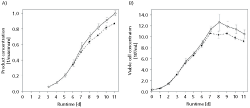
Global site-to-site transfers in the same company or to external partners can be challenging when different equipment with different geometries are used. Identical disposable bioreactors can be used at multiple sites as standard transfer tool, enabling a smooth process transfer of cell-culture processes in a global network. Figure 3 illustrates how the use of identical disposable equipment, and thus the same process flow, resulted in comparable the cell-culture performance between processes performed in Europa and Asia.
The implementation of disposable systems with diverse scales creates additional challenges in scale-up and scale-down because more systems and scales have to fit together with respect to process performance and product quality. In this context, in-depth hardware characterization is crucial for successful scale-up, scale-down, and global site-to-site transfers. Sophisticated tools, such as computational fluid dynamics, enable the characterization of cell-culture vessels with total volumes ranging from 250 mL to 12,000 L (Figure 4).
CLICK FIGURE TO ENLARGE Figure 4: Depiction of the turbulent kinetic energy (top), a measure of the turbulence introduced through agitation of the vessel in a 250-mL (left) and a 12,000 L production bioreactor (right). Illustration of velocity gradients (bottom) in a 250-mL (left) and a 12,000-L production bioreactor (right).
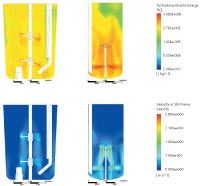
In addition, small-scale systems are a prerequisite for successful process characterization studies to provide reliable evidence that process parameters and associated critical product attributes are capable of meeting the anticipated product quality profiles.
Conclusion
With the increasing number of biopharmaceutical products, especially monoclonal antibodies, entering different stages of development and finally commercialization, biopharmaceutical companies are increasingly looking at innovative solutions to deliver this product pipeline. For antibody process development and production, maintaining desired quality attributes while reducing time from DNA to market, maintaining cost effectiveness, and providing manufacturing flexibility are key topics in today’s competitive market. Because antibody therapies may require large doses over a long period of time, manufacturing capacity becomes an issue because the drug substance must be produced in large quantities with cost and time efficiency to meet clinical requirements and pave the way toward commercialization.
Within the past 25 years, advances in cell-culture technology have increased the expression of recombinant proteins from milligrams per liter to several grams per liter. Mammalian cell technology is today considered robust and reliable for the synthesis of monoclonal antibodies both for clinical studies and commercial manufacturing. These advances are the outcome from intensive research in cell line engineering, media development, feeding strategies, cell metabolism, better process understanding, and their impact on product quality and scale-up. It is expected that better understanding of cell biology based on advances in genomics, proteomics, metabolomics, and applications like next-generation sequencing, combined with further improvements in media, high-throughput technologies, online monitoring, and automation, will allow enlargement of the experimental design space, but will also lower the cost of process development and the cost of commercial manufacturing.
ALL FIGURES ARE COURTESY OF THE AUTHORS
Article Details
BioPharm International
Vol. 29, No. 4
Pages: 20–25
Citation
When referring to this article, please cite it as H. Bradl, "Platform Approach Speeds Process Development" BioPharm International 29 (4) 2016.
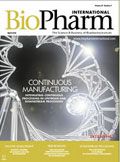
Newsletter
Stay at the forefront of biopharmaceutical innovation—subscribe to BioPharm International for expert insights on drug development, manufacturing, compliance, and more.
Pfizer Obtains Exclusive Rights to 3SBio’s Bispecific Antibody Targeting PD-1 and VEGF
July 25th 2025The licensing agreement between the two companies gives Pfizer the rights to develop, manufacture, and commercialize 3SBio’s bispecific antibody, SSGJ-707, which is in clinical trials for the treatment of a variety of cancers.